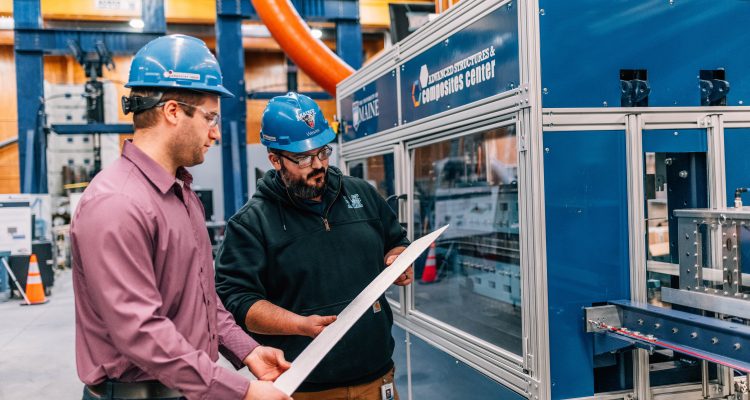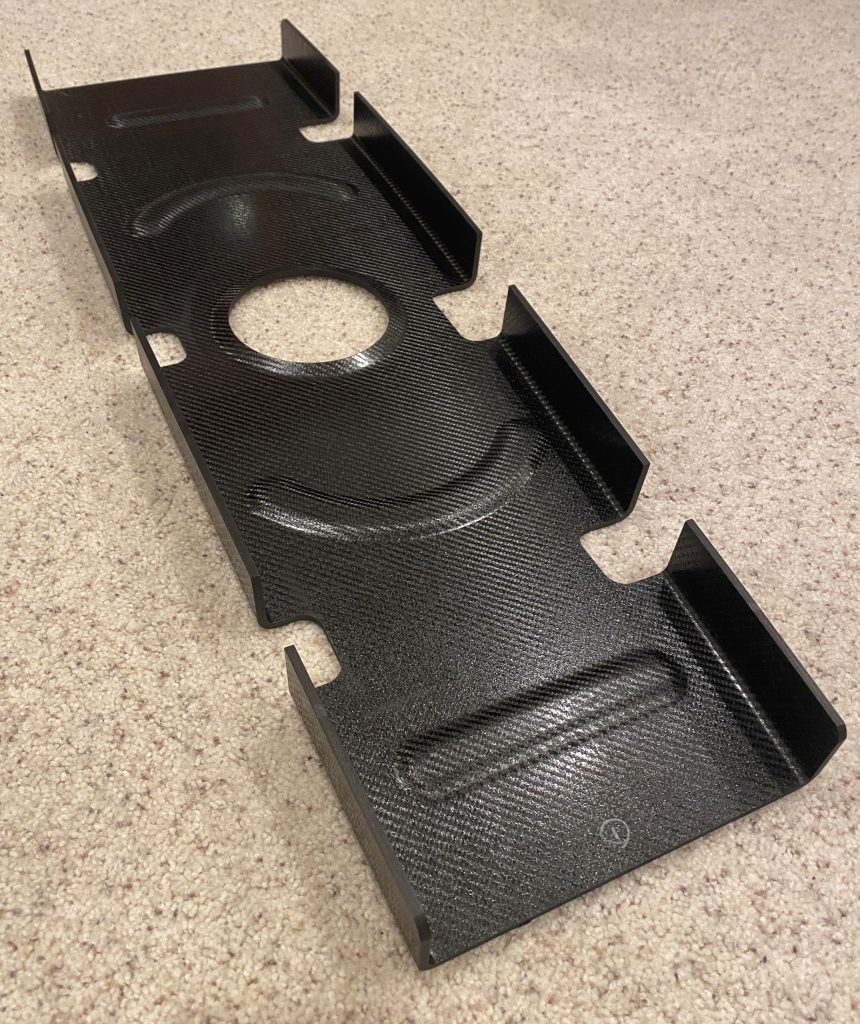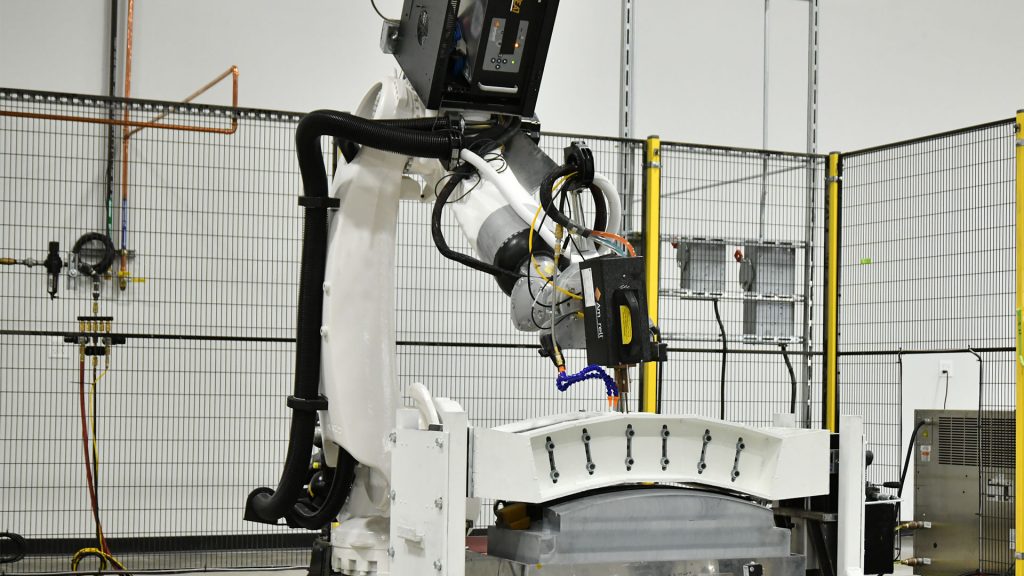“When you’re talking about aerospace in particular, people aren’t quick to change. You really have to prove capabilities with scalability and supporting performance data,” he says.
With more than 20 years of experience in thermoplastics development, Bowles is excited at the possibilities for the material.
“There are so many advantages of thermoplastics – the ability to recycle, ease of storage, speed of manufacturing. The challenge is we have to make these materials and their manufacturing processes more cost effective to bring those things in balance,” he says. “And we have to help educate end users and manufacturers on the materials, their capabilities and their performance characteristics.”
Developing a Welding Certification Roadmap
Collins Aerospace has been stamp forming small, structural thermoplastic parts for more than two decades. With advancements in automation technology, the company would like to ramp up its use of thermoplastic materials for applications such as control surfaces and nacelles.
“We have a unique opportunity to get an improvement in properties and cycle time, potentially equating to cheaper parts,” says Ursenbach. That will require joining of more complex parts via welding.
There are numerous welding techniques being developed for thermoplastics, including resistance, induction and ultrasonic welding, each with their own advantages.
“Fundamentally, you can use any method as long as you can generate and control the heat. The other aspect is intimate contact,” says Croshaw. “You need to make sure that whatever welding technology you use, you have full parts in close contact with each other so the polymer physics can take over – so the polymer chains can start moving.”
Welding thermoplastic composite parts can save time and money compared to bonding thermoset components. Typically, thermoset secondary bonding involves preparing the surface of cured parts, then applying an external adhesive. Afterward, thermoset assemblies undergo an additional autoclave cycle to cure the adhesive and bond the two parts together.
“With thermosets, you are really doing chemistry on the factory floor when you co-cure or adhesively bond parts together,” says Croshaw. “But with thermoplastic composites, the chemistry is done. You take two separate parts and join them by welding. All you need to do is create the environment for which molecular entanglement can occur. If you create the right conditions, the weld occurs rapidly.”
Despite the benefits of welding thermoplastic composites, there’s a hurdle to implementing the developing technology – certification.
“I think welded thermoplastics is a technology we really do need for the next-generation single-aisle to meet the projected aircraft rates [of 75 to 100 per month],” says Croshaw. “In order to do that and get these welded thermoplastic parts flying they must be certifiable.”
The team at Collins Aerospace has a proposed certification roadmap, which they will present at the Thermoplastic Composites Conference. “The goal of a certification roadmap is to deliver a set of structured information that can complement existing certification approaches – documents like the Composites Material Handbook (CMH-17) – and extend their applicability to welded thermoplastic structures,” says Croshaw.
The roadmap would include recurring and non-recurring steps. Recurring steps pertain to individual welding processes and materials.
“One of the most important things for welding is defining the important process parameters,” says Croshaw. “And that goes back to creating the right conditions for a weld – the right combination of pressure, temperature and time.”
An example of a non-recurring step is industry agreement on a roadmap. Croshaw stresses that industry buy-in and collaboration is critical.
“The biggest challenge is establishing a certification approach for welded thermoplastic composite structures that will be recognized and used within the U.S. and internationally across the industry,” he says.
Susan Keen Flynn is managing editor of Composites Manufacturing magazine. Email comments to sflynn@keenconcepts.net.
This demonstrator aerospace rib structure features KyronTEX® prepreg (shown inset) with woven carbon fiber reinforcement.
This KUKA robot with an Ambrell induction heating system is positioning the end effector into the weld tooling and welding two thermoplastic parts together.




